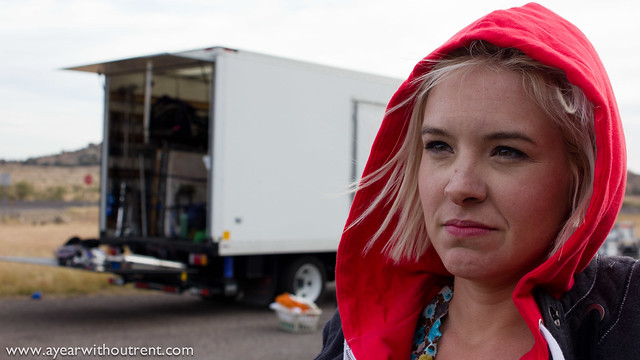
by Benjamin Stark
So, here we are. Two great films completed, and nowhere to put them.
That’s probably an overstatement. Let me back up.
I’m part of Wonder Mill Films. We’ve made two “southern” films, utilizing the DIY ethos. Our first film is the sci-fi (-ish) adventure film A GENESIS FOUND, which we shot in 2008. The next year, we shot the noir thriller THE NOCTURNAL THIRD. Both are well-crafted genre pieces with moderately intelligent ambitions, and we’re very proud of them... but, almost like parents hoping to be “empty nesters”, we at Wonder Mill are ready for them to get into the world, able to be stumbled upon and enjoyed by casual movie watchers.
It’s a good time for us - and myself, personally - to look back at the last five or six years. My senior year in college was a flurry of filmmaking activity, as I wrote and directed seven or so short films in a small amount of time. As a group, we produced about twelve. Since then, we’ve managed to produce another few shorts, as well as two feature-length movies. We’ve achieved all of this through putting our nose to the grindstone and staying busy, but now we find ourselves at that scary point where, really, all of our striving doesn’t create an assured result.
I think every modern independent filmmaker realizes I’m talking about distribution. There are hundreds of us: We’ve dredged our hearts, found our stories, inspired our actors, sweat the small stuff, fought the hard fights, and yet we still find our films with marginal audiences, our work having a hard time departing the nest of our circles of influence.
Although every stage of filmmaking is challenging, it seems that distribution is the toughest nut to crack, because there is no formula. We’ve been very aware of the potential audiences for both of our films, but in the end, we’re only a few people, and our films dare to dabble in fairly populist territory. How can our films compete with mainstream entertainment? I might not be exaggerating when I say that for every new digital cinema camera sensor that hits the market to help filmmakers gain an “industry standard” aesthetic, the market for qualifiedly mainstream entertainment gets more crowded. How is my community college valedictorian going to compete with the rich Harvard kid with the 2.0 GPA, anyway?
I digress. There is hope. First of all, as Jean Pierre Geuens reminds us in his brilliant book Film Production Theory, “the joy of thinking, creating, and assembling images and sounds that mean something is your own reward.” No one owes me anything. I don’t have to make films, I get to make films. Not only is there amazing technology out there that helped us craft great-looking movies, but there are also services out there like Kickstarter and Distribber.
On May 25th, we launched our first ever high-stakes crowd-funding campaign. With the help of indie film journeyman and crowd-funding consultant Lucas McNelly, we're using Kickstarter to raise about $6,000 so we can submit our films to Netflix Instant, Hulu Plus, and iTunes via Distribber. We also need some cash to screen the films at colleges in our area, hoping to share what we’ve learned with current film students, as well as learn what they’re learning right now. We’re currently between films, so it’s a great time to look back and revisit my experiences as a filmmaker thus far, while creating some sort of momentum going forward, as well as re-capturing the thrill of student filmmaking.
A social endeavor like a crowd-funding campaign is, to me, as adventurous and treacherous as a summer-long film shoot in a sweltering Alabama forest. If any of you readers have suggestions or tips for building an audience and generating buzz for our films, we’d greatly appreciate it. You can reach us on Twitter at @wondermillfilms or at wondermillfilms[at]yahoo.com!
I’m a natural director. I often feel anxious to move onto another project. But that would discount the hard work that our cast and crew have put into these films, and it would abandon the stories that we fought so hard to tell. If you’re a filmmaker, I’d encourage you to keep your head down and keep working at your story. You might eventually get to the point where someone else has to take it and run with it, but until then, it’s under your roof, and it’s your story. Give it a good home.

















































